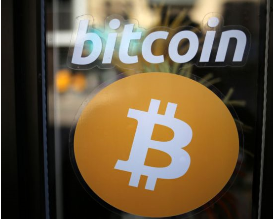How Bitcoin is infiltrating the $60bn global art market
Why is the art world getting excited about digital currency Bitcoin and its underlying technology blockchain?
But she is also a passionate believer in the power of Bitcoin and other digital currencies.
When we meet she is busy preparing for an exhibition of sculptures made from the exhausts of former Formula 1 racing cars.
One of these strange rib-cage-like creations made from the super-strong alloy inconel has been gold-plated and will sell for about £35,000.
"These are pieces of history," she tells me.
In a first for the tradition-bound art world of Cork Street, her international clientele will have the opportunity to pay using Bitcoin, the digital cryptocurrency underpinned by blockchain technology.
The gallery will also accept other cryptocurrencies such as Ethereum, Ethereum Classic, Dash, Litecoin, and soon, Monero, she says.
Why?"This is not a demand-driven decision at all, it's intuitive based on the way things are going," she says.
She believes paying by cryptocurrency will become as normal as paying by cash or credit card. She also hopes it will attract a new, non-traditional type of art investor.
Blockchain, the underlying technology, is a digital ledger or record of transactions that is distributed across, and verified by, thousands of computers in a network.
Once the network has reached a consensus that a transaction has happened, the ledger is updated and cannot be tampered with.
"Blockchain is a borderless, open source, decentralised peer-to-peer network that governments cannot shut down," she says. "For me, the blockchain is going to be the biggest thing since the internet."
And the fact that there is no centralised body - like a bank head office, for example - makes cryptocurrencies safer, she argues, despite their reputation for being volatile, high-risk and the favourite "store of value" for criminals and hackers.
Bitcoin payments can be anonymous and potentially beyond the grasp of tax authorities, but this isn't the reason she's offering payment by cryptocurrency, she assures me.
So how easy is it to accept a Bitcoin payment?
"It's really very simple," she explains. "I give the client my public key [a long string of letters and numbers] and they use that to send bitcoin to my account from their digital wallet or bitcoin exchange," she says.
"My wallet is linked to my personal bank so I can then convert those bitcoins into pounds, euros or dollars."
Ms Dadiani is such a fan of cryptocurrencies - she trades in them as well - that she is launching her own version, Dadicoin, later this year.
The $60bn art world in general is warming to the potential of cryptocurrencies, partly because of blockchain's dual ability to establish the provenance of works of art and thereby reduce the reliance on brokers and other middlemen.
Marcelo Garcia Casil, for example, is chief executive and co-founder of Maecenas, an online marketplace that will enable art owners to sell shares in their expensive works of art (worth more than $1m) and raise money far more cheaply than they could though a bank.
And the owners also get to keep possession of their artworks while sharing up to 49% of the ownership.
Investors, who ordinarily wouldn't be able to afford multi-million-dollar works of art, will be able buy shares or units in the work using cryptocurrency. They will then be able to sell these units later in the marketplace. Each transaction is recorded cryptographically on the Ethereum blockchain.
"We want to make fine art accessible for everyone," says Mr Casil, who was born in Argentina, now lives in Singapore, and has a background in investment banking.
"The old auction houses like Christie's and Sotheby's have controlled the art market for centuries, so we think the opportunity for disruption is huge."
Establishing the authenticity of works of art is critical to their value, and this will still need to be done by skilled professionals, admits Mr Casil.
"But once the provenance has been recorded in the blockchain, you never have to do it again," he says. This takes a lot of cost out of the system.




Comments
Post a Comment